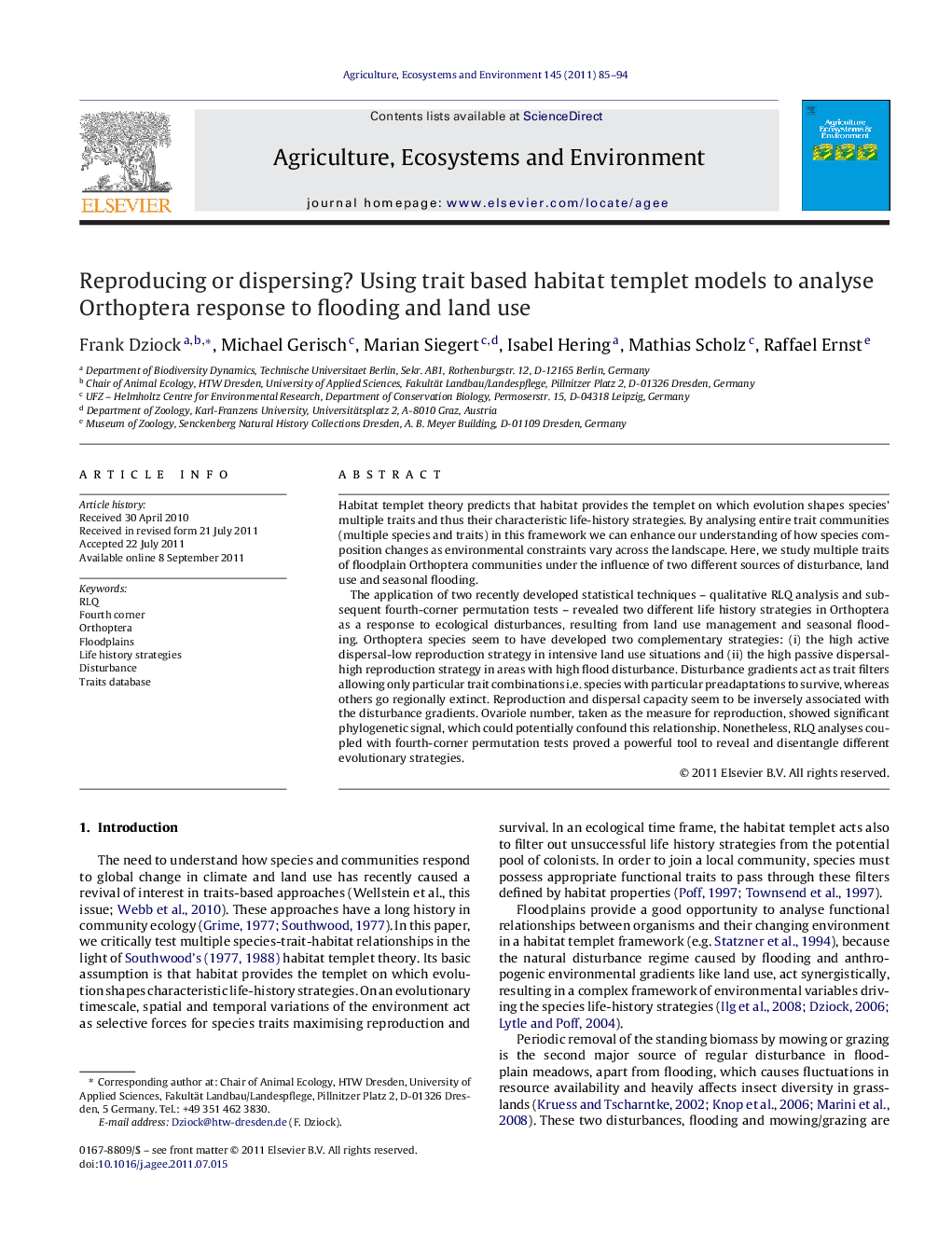| کد مقاله | کد نشریه | سال انتشار | مقاله انگلیسی | نسخه تمام متن |
|---|---|---|---|---|
| 2414590 | 1103922 | 2011 | 10 صفحه PDF | دانلود رایگان |

Habitat templet theory predicts that habitat provides the templet on which evolution shapes species’ multiple traits and thus their characteristic life-history strategies. By analysing entire trait communities (multiple species and traits) in this framework we can enhance our understanding of how species composition changes as environmental constraints vary across the landscape. Here, we study multiple traits of floodplain Orthoptera communities under the influence of two different sources of disturbance, land use and seasonal flooding.The application of two recently developed statistical techniques – qualitative RLQ analysis and subsequent fourth-corner permutation tests – revealed two different life history strategies in Orthoptera as a response to ecological disturbances, resulting from land use management and seasonal flooding. Orthoptera species seem to have developed two complementary strategies: (i) the high active dispersal-low reproduction strategy in intensive land use situations and (ii) the high passive dispersal-high reproduction strategy in areas with high flood disturbance. Disturbance gradients act as trait filters allowing only particular trait combinations i.e. species with particular preadaptations to survive, whereas others go regionally extinct. Reproduction and dispersal capacity seem to be inversely associated with the disturbance gradients. Ovariole number, taken as the measure for reproduction, showed significant phylogenetic signal, which could potentially confound this relationship. Nonetheless, RLQ analyses coupled with fourth-corner permutation tests proved a powerful tool to reveal and disentangle different evolutionary strategies.
► We studied Orthoptera traits along a land use and flood disturbance gradient.
► RLQ analysis and fourth corner permutation tests were used.
► Two complementary life history strategies could be identified.
► High active dispersal-low reproduction strategy in intensive land use situations.
► High passive dispersal-high reproduction strategy in areas with high flood disturbance.
Journal: Agriculture, Ecosystems & Environment - Volume 145, Issue 1, December 2011, Pages 85–94